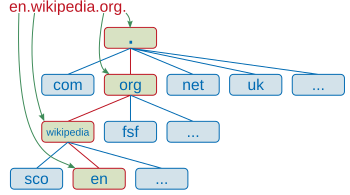

action-oriented keywords"Action-oriented keywords encourage users to take a specific step, such as download, register, or learn. Best SEO Sydney Agency. Best SEO Agency Sydney Australia. By targeting these terms, you guide visitors toward meaningful interactions on your site."
advanced image compression techniquesAdvanced image compression techniques use modern algorithms to reduce file size while maintaining quality. Techniques such as WebP or SVG compression help ensure that your images look great without slowing down your website.
advanced image optimization techniques"Advanced techniques, including responsive image sets and modern compression formats, enhance visual quality and load speed. By using cutting-edge methods, you maintain a competitive edge and ensure optimal user experience."
algorithm update tracking"Algorithm update tracking involves monitoring search engine changes that affect rankings. By staying informed, businesses can adjust strategies quickly, maintain strong rankings, and continue driving organic traffic."
alt text for images"Alt text describes the content of images for search engines and visually impaired users. Best Search Engine Optimisation Services. By adding descriptive, keyword-rich alt text, you improve image accessibility, boost SEO, and help your content appear in image search results."
alt text for imagesAlt text for images provides a written description that helps search engines understand the content of the image. Including relevant keywords and accurate descriptions improves accessibility and increases the chances of the image appearing in search results.

Consistently producing high-quality content helps establish your brand as an industry leader and boosts credibility.
Posted by SEO Sydney on

Implementing effective local SEO tactics can significantly improve your business�s visibility and credibility in your area.
Posted by SEO Sydney on

Well-optimized images improve page speed, accessibility, and overall user satisfaction, which boosts SEO performance.
Posted by SEO Sydney on

Properly optimized images enhance page speed, user experience, and search engine rankings.
Posted by SEO Sydney on
anchor text optimization"Anchor text optimization involves using descriptive, relevant text for hyperlinks. SEO Packages Sydney . By strategically choosing anchor text, businesses can signal the contents topic to search engines, improve keyword rankings, and create a better navigation experience for users."
Anchor text optimization"Anchor text optimization ensures that the clickable text of your backlinks is relevant and natural. By using a variety of anchor textssuch as branded terms, keywords, and generic phrasesyou create a more diverse link profile that can help improve your search rankings."
automated image optimization"Automated image optimization uses tools and plugins to handle compression, resizing, and metadata updates without manual input. Automation speeds up the optimization process, reduces errors, and ensures consistent quality."


Backlink analysis"Backlink analysis examines the incoming links pointing to your website to assess their quality and relevance. By understanding which links are helping or harming your sites authority, you can refine your link building efforts and focus on acquiring more valuable backlinks."
backlink building"Backlink building focuses on acquiring high-quality links from other websites that point to your own.
behavioral keywordsBehavioral keywords are terms that reflect the actions or behaviors of your audience. Understanding these keywords helps you create content that aligns with user interests and encourages engagement.
Best SEO agency Sydney"Sydneys best SEO agencies deliver outstanding results through tailored strategies and a commitment to excellence. By focusing on technical optimization, content creation, and data analysis, these agencies help businesses achieve higher rankings, drive traffic, and increase conversions."
Best SEO company in Sydney"The best SEO company in Sydney offers proven strategies, exceptional customer service, and measurable results.
Best SEO company Sydney"Sydneys best SEO companies offer proven strategies, exceptional customer service, and measurable results. By combining technical expertise, creative content, and data-driven insights, these companies help businesses achieve higher rankings, increased traffic, and improved conversions."


Best SEO Sydney"The best SEO providers in Sydney offer customized solutions that improve website performance, increase rankings, and drive organic traffic. By combining technical expertise, creative content strategies, and ongoing support, these providers help businesses achieve sustained success in a competitive digital landscape."
Black-hat link building risks"Black-hat link building risks include penalties, de-indexing, and long-term damage to your sites reputation. While these tactics may produce quick results, they often lead to severe consequences that outweigh any short-term gains."
Blogger outreach"Blogger outreach involves reaching out to bloggers in your industry to request backlinks or content collaborations. By building relationships with influential bloggers, you can earn high-quality links and expand your reach within your niche."
bounce rate optimization"Bounce rate optimization involves reducing the number of visitors who leave a website without interacting further. By improving content relevance, page load times, and site design, businesses can keep users engaged longer, signaling to search engines that the site provides value."
brand comparison keywordsBrand comparison keywords focus on how your products or services stack up against competitors. Creating content around these comparisons helps users make informed decisions and builds trust in your brand.
Branded anchor textBranded anchor text uses your company or website name as the clickable text for a backlink. This approach helps maintain a natural link profile and strengthens your brands visibility in search results.

A web directory or link directory is an online list or catalog of websites. That is, it is a directory on the World Wide Web of (all or part of) the World Wide Web. Historically, directories typically listed entries on people or businesses, and their contact information; such directories are still in use today. A web directory includes entries about websites, including links to those websites, organized into categories and subcategories.[1][2][3] Besides a link, each entry may include the title of the website, and a description of its contents. In most web directories, the entries are about whole websites, rather than individual pages within them (called "deep links"). Websites are often limited to inclusion in only a few categories.
There are two ways to find information on the Web: by searching or browsing. Web directories provide links in a structured list to make browsing easier. Many web directories combine searching and browsing by providing a search engine to search the directory. Unlike search engines, which base results on a database of entries gathered automatically by web crawler, most web directories are built manually by human editors. Many web directories allow site owners to submit their site for inclusion, and have editors review submissions for fitness.
Web directories may be general in scope, or limited to particular subjects or fields. Entries may be listed for free, or by paid submission (meaning the site owner must pay to have his or her website listed).
RSS directories are similar to web directories, but contain collections of RSS feeds, instead of links to websites.
During the early development of the web, there was a list of web servers edited by Tim Berners-Lee and hosted on the CERN webserver. One historical snapshot from 1992 remains.[4] He also created the World Wide Web Virtual Library, which is the oldest web directory.[5]
Most of the directories are general in on scope and list websites across a wide range of categories, regions and languages. But some niche directories focus on restricted regions, single languages, or specialist sectors. For example, there are shopping directories that specialize in the listing of retail e-commerce sites.
Examples of well-known general web directories are Yahoo! Directory (shut down at the end of 2014) and DMOZ (shut down on March 14, 2017). DMOZ was significant due to its extensive categorization and large number of listings and its free availability for use by other directories and search engines.[6]
However, a debate over the quality of directories and databases still continues, as search engines use DMOZ's content without real integration, and some experiment using clustering.
There have been many attempts to make building web directories easier, such as using automated submission of related links by script, or any number of available PHP portals and programs. Recently, social software techniques have spawned new efforts of categorization, with Amazon.com adding tagging to their product pages.
Directories have various features in their listings, often depending upon the price paid for inclusion:
rel="nofollow" attribute associated with the link, meaning search engines will give no weight to the linkA human-edited directory is created and maintained by editors who add links based on the policies particular to that directory. Human-edited directories are often targeted by SEOs on the basis that links from reputable sources will improve rankings in the major search engines. Some directories may prevent search engines from rating a displayed link by using redirects, nofollow attributes, or other techniques. Many human-edited directories, including DMOZ, World Wide Web Virtual Library, Business.com and Jasmine Directory, are edited by volunteers, who are often experts in particular categories. These directories are sometimes criticized due to long delays in approving submissions, or for rigid organizational structures and disputes among volunteer editors.
In response to these criticisms, some volunteer-edited directories have adopted wiki technology, to allow broader community participation in editing the directory (at the risk of introducing lower-quality, less objective entries).
Another direction taken by some web directories is the paid for inclusion model. This method enables the directory to offer timely inclusion for submissions and generally fewer listings as a result of the paid model. They often offer additional listing options to further enhance listings, including features listings and additional links to inner pages of the listed website. These options typically have an additional fee associated but offer significant help and visibility to sites and/or their inside pages.
Today submission of websites to web directories is considered a common SEO (search engine optimization) technique to get back-links for the submitted website. One distinctive feature of 'directory submission' is that it cannot be fully automated like search engine submissions. Manual directory submission is a tedious and time-consuming job and is often outsourced by webmasters.
Bid for Position directories, also known as bidding web directories, are paid-for-inclusion web directories where the listings of websites in the directory are ordered according to their bid amount. They are special in that the more a person pays, the higher up the list of websites in the directory they go. With the higher listing, the website becomes more visible and increases the chances that visitors who browse the directory will click on the listing.
Web directories will often make themselves accessing by more and more URLs by acquiring the domain registrations of defunct websites as soon as they expire, a practice known as Domain drop catching.
Reciprocal links may not help with competitive keyword rankings, but that does not mean you should avoid them when they make sound business sense. What you should definitely avoid are manipulative reciprocal linking schemes like automated link trading programs and three-way links or four-way links.

In the Internet, a domain name is a string that identifies a realm of administrative autonomy, authority or control. Domain names are often used to identify services provided through the Internet, such as websites, email services and more. Domain names are used in various networking contexts and for application-specific naming and addressing purposes. In general, a domain name identifies a network domain or an Internet Protocol (IP) resource, such as a personal computer used to access the Internet, or a server computer.
Domain names are formed by the rules and procedures of the Domain Name System (DNS). Any name registered in the DNS is a domain name. Domain names are organized in subordinate levels (subdomains) of the DNS root domain, which is nameless. The first-level set of domain names are the top-level domains (TLDs), including the generic top-level domains (gTLDs), such as the prominent domains com, info, net, edu, and org, and the country code top-level domains (ccTLDs). Below these top-level domains in the DNS hierarchy are the second-level and third-level domain names that are typically open for reservation by end-users who wish to connect local area networks to the Internet, create other publicly accessible Internet resources or run websites, such as "wikipedia.org". The registration of a second- or third-level domain name is usually administered by a domain name registrar who sell its services to the public.
A fully qualified domain name (FQDN) is a domain name that is completely specified with all labels in the hierarchy of the DNS, having no parts omitted. Traditionally a FQDN ends in a dot (.) to denote the top of the DNS tree.[1] Labels in the Domain Name System are case-insensitive, and may therefore be written in any desired capitalization method, but most commonly domain names are written in lowercase in technical contexts.[2] A hostname is a domain name that has at least one associated IP address.
Domain names serve to identify Internet resources, such as computers, networks, and services, with a text-based label that is easier to memorize than the numerical addresses used in the Internet protocols. A domain name may represent entire collections of such resources or individual instances. Individual Internet host computers use domain names as host identifiers, also called hostnames. The term hostname is also used for the leaf labels in the domain name system, usually without further subordinate domain name space. Hostnames appear as a component in Uniform Resource Locators (URLs) for Internet resources such as websites (e.g., en.wikipedia.org).
Domain names are also used as simple identification labels to indicate ownership or control of a resource. Such examples are the realm identifiers used in the Session Initiation Protocol (SIP), the Domain Keys used to verify DNS domains in e-mail systems, and in many other Uniform Resource Identifiers (URIs).
An important function of domain names is to provide easily recognizable and memorizable names to numerically addressed Internet resources. This abstraction allows any resource to be moved to a different physical location in the address topology of the network, globally or locally in an intranet. Such a move usually requires changing the IP address of a resource and the corresponding translation of this IP address to and from its domain name.
Domain names are used to establish a unique identity. Organizations can choose a domain name that corresponds to their name, helping Internet users to reach them easily.
A generic domain is a name that defines a general category, rather than a specific or personal instance, for example, the name of an industry, rather than a company name. Some examples of generic names are books.com, music.com, and travel.info. Companies have created brands based on generic names, and such generic domain names may be valuable.[3]
Domain names are often simply referred to as domains and domain name registrants are frequently referred to as domain owners, although domain name registration with a registrar does not confer any legal ownership of the domain name, only an exclusive right of use for a particular duration of time. The use of domain names in commerce may subject them to trademark law.
The practice of using a simple memorable abstraction of a host's numerical address on a computer network dates back to the ARPANET era, before the advent of today's commercial Internet. In the early network, each computer on the network retrieved the hosts file (host.txt) from a computer at SRI (now SRI International),[4][5] which mapped computer hostnames to numerical addresses. The rapid growth of the network made it impossible to maintain a centrally organized hostname registry and in 1983 the Domain Name System was introduced on the ARPANET and published by the Internet Engineering Task Force as RFC 882 and RFC 883.
The following table shows the first five .com domains with the dates of their registration:[6]
| Domain name | Registration date |
|---|---|
| symbolics.com | 15 March 1985 |
| bbn.com | 24 April 1985 |
| think.com | 24 May 1985 |
| mcc.com | 11 July 1985 |
| dec.com | 30 September 1985 |
and the first five .edu domains:[7]
| Domain name | Registration date |
|---|---|
| berkeley.edu | 24 April 1985 |
| cmu.edu | 24 April 1985 |
| purdue.edu | 24 April 1985 |
| rice.edu | 24 April 1985 |
| ucla.edu | 24 April 1985 |

Today, the Internet Corporation for Assigned Names and Numbers (ICANN) manages the top-level development and architecture of the Internet domain name space. It authorizes domain name registrars, through which domain names may be registered and reassigned.

The domain name space consists of a tree of domain names. Each node in the tree holds information associated with the domain name. The tree sub-divides into zones beginning at the DNS root zone.
A domain name consists of one or more parts, technically called labels, that are conventionally concatenated, and delimited by dots, such as example.com.
When the Domain Name System was devised in the 1980s, the domain name space was divided into two main groups of domains.[9] The country code top-level domains (ccTLD) were primarily based on the two-character territory codes of ISO-3166 country abbreviations. In addition, a group of seven generic top-level domains (gTLD) was implemented which represented a set of categories of names and multi-organizations.[10] These were the domains gov, edu, com, mil, org, net, and int. These two types of top-level domains (TLDs) are the highest level of domain names of the Internet. Top-level domains form the DNS root zone of the hierarchical Domain Name System. Every domain name ends with a top-level domain label.
During the growth of the Internet, it became desirable to create additional generic top-level domains. As of October 2009, 21 generic top-level domains and 250 two-letter country-code top-level domains existed.[11] In addition, the ARPA domain serves technical purposes in the infrastructure of the Domain Name System.
During the 32nd International Public ICANN Meeting in Paris in 2008,[12] ICANN started a new process of TLD naming policy to take a "significant step forward on the introduction of new generic top-level domains." This program envisions the availability of many new or already proposed domains, as well as a new application and implementation process.[13] Observers believed that the new rules could result in hundreds of new top-level domains to be registered.[14] In 2012, the program commenced, and received 1930 applications.[15] By 2016, the milestone of 1000 live gTLD was reached.
The Internet Assigned Numbers Authority (IANA) maintains an annotated list of top-level domains in the DNS root zone database.[16]
For special purposes, such as network testing, documentation, and other applications, IANA also reserves a set of special-use domain names.[17] This list contains domain names such as example, local, localhost, and test. Other top-level domain names containing trade marks are registered for corporate use. Cases include brands such as BMW, Google, and Canon.[18]
Below the top-level domains in the domain name hierarchy are the second-level domain (SLD) names. These are the names directly to the left of .com, .net, and the other top-level domains. As an example, in the domain example.co.uk, co is the second-level domain.
Next are third-level domains, which are written immediately to the left of a second-level domain. There can be fourth- and fifth-level domains, and so on, with virtually no limitation. Each label is separated by a full stop (dot). An example of an operational domain name with four levels of domain labels is sos.state.oh.us. 'sos' is said to be a sub-domain of 'state.oh.us', and 'state' a sub-domain of 'oh.us', etc. In general, subdomains are domains subordinate to their parent domain. An example of very deep levels of subdomain ordering are the IPv6 reverse resolution DNS zones, e.g., 1.0.0.0.0.0.0.0.0.0.0.0.0.0.0.0.0.0.0.0.0.0.0.0.0.0.0.0.0.0.0.0.ip6.arpa, which is the reverse DNS resolution domain name for the IP address of a loopback interface, or the localhost name.
Second-level (or lower-level, depending on the established parent hierarchy) domain names are often created based on the name of a company (e.g., bbc.co.uk), product or service (e.g. hotmail.com). Below these levels, the next domain name component has been used to designate a particular host server. Therefore, ftp.example.com might be an FTP server, www.example.com would be a World Wide Web server, and mail.example.com could be an email server, each intended to perform only the implied function. Modern technology allows multiple physical servers with either different (cf. load balancing) or even identical addresses (cf. anycast) to serve a single hostname or domain name, or multiple domain names to be served by a single computer. The latter is very popular in Web hosting service centers, where service providers host the websites of many organizations on just a few servers.
The hierarchical DNS labels or components of domain names are separated in a fully qualified name by the full stop (dot, .).
The character set allowed in the Domain Name System is based on ASCII and does not allow the representation of names and words of many languages in their native scripts or alphabets. ICANN approved the Internationalized domain name (IDNA) system, which maps Unicode strings used in application user interfaces into the valid DNS character set by an encoding called Punycode. For example, københavn.eu is mapped to xn--kbenhavn-54a.eu. Many registries have adopted IDNA.
The first commercial Internet domain name, in the TLD com, was registered on 15 March 1985 in the name symbolics.com by Symbolics Inc., a computer systems firm in Cambridge, Massachusetts.
By 1992, fewer than 15,000 com domains had been registered.
In the first quarter of 2015, 294 million domain names had been registered.[19] A large fraction of them are in the com TLD, which as of December 21, 2014, had 115.6 million domain names,[20] including 11.9 million online business and e-commerce sites, 4.3 million entertainment sites, 3.1 million finance related sites, and 1.8 million sports sites.[21] As of July 15, 2012, the com TLD had more registrations than all of the ccTLDs combined.[22]
As of December 31, 2023,[update] 359.8 million domain names had been registered.[23]
The right to use a domain name is delegated by domain name registrars, which are accredited by the Internet Corporation for Assigned Names and Numbers (ICANN), the organization charged with overseeing the name and number systems of the Internet. In addition to ICANN, each top-level domain (TLD) is maintained and serviced technically by an administrative organization operating a registry. A registry is responsible for maintaining the database of names registered within the TLD it administers. The registry receives registration information from each domain name registrar authorized to assign names in the corresponding TLD and publishes the information using a special service, the WHOIS protocol.
Registries and registrars usually charge an annual fee for the service of delegating a domain name to a user and providing a default set of name servers. Often, this transaction is termed a sale or lease of the domain name, and the registrant may sometimes be called an "owner", but no such legal relationship is actually associated with the transaction, only the exclusive right to use the domain name. More correctly, authorized users are known as "registrants" or as "domain holders".
ICANN publishes the complete list of TLD registries and domain name registrars. Registrant information associated with domain names is maintained in an online database accessible with the WHOIS protocol. For most of the 250 country code top-level domains (ccTLDs), the domain registries maintain the WHOIS (Registrant, name servers, expiration dates, etc.) information.
Some domain name registries, often called network information centers (NIC), also function as registrars to end-users. The major generic top-level domain registries, such as for the com, net, org, info domains and others, use a registry-registrar model consisting of hundreds of domain name registrars (see lists at ICANN[24] or VeriSign).[25] In this method of management, the registry only manages the domain name database and the relationship with the registrars. The registrants (users of a domain name) are customers of the registrar, in some cases through additional layers of resellers.
There are also a few other alternative DNS root providers that try to compete or complement ICANN's role of domain name administration, however, most of them failed to receive wide recognition, and thus domain names offered by those alternative roots cannot be used universally on most other internet-connecting machines without additional dedicated configurations.
In the process of registering a domain name and maintaining authority over the new name space created, registrars use several key pieces of information connected with a domain:
A domain name consists of one or more labels, each of which is formed from the set of ASCII letters, digits, and hyphens (a–z, A–Z, 0–9, -), but not starting or ending with a hyphen. The labels are case-insensitive; for example, 'label' is equivalent to 'Label' or 'LABEL'. In the textual representation of a domain name, the labels are separated by a full stop (period).
Domain names are often seen in analogy to real estate in that domain names are foundations on which a website can be built, and the highest quality domain names, like sought-after real estate, tend to carry significant value, usually due to their online brand-building potential, use in advertising, search engine optimization, and many other criteria.
A few companies have offered low-cost, below-cost or even free domain registration with a variety of models adopted to recoup the costs to the provider. These usually require that domains be hosted on their website within a framework or portal that includes advertising wrapped around the domain holder's content, revenue from which allows the provider to recoup the costs. Domain registrations were free of charge when the DNS was new. A domain holder may provide an infinite number of subdomains in their domain. For example, the owner of example.org could provide subdomains such as foo.example.org and foo.bar.example.org to interested parties.
Many desirable domain names are already assigned and users must search for other acceptable names, using Web-based search features, or WHOIS and dig operating system tools. Many registrars have implemented domain name suggestion tools which search domain name databases and suggest available alternative domain names related to keywords provided by the user.
The business of resale of registered domain names is known as the domain aftermarket. Various factors influence the perceived value or market value of a domain name. Most of the high-prize domain sales are carried out privately.[26] Also, it is called confidential domain acquiring or anonymous domain acquiring.[27]
Intercapping is often used to emphasize the meaning of a domain name, because DNS names are not case-sensitive. Some names may be misinterpreted in certain uses of capitalization. For example: Who Represents, a database of artists and agents, chose whorepresents.com,[28] which can be misread. In such situations, the proper meaning may be clarified by placement of hyphens when registering a domain name. For instance, Experts Exchange, a programmers' discussion site, used expertsexchange.com, but changed its domain name to experts-exchange.com.[29]
The domain name is a component of a uniform resource locator (URL) used to access websites, for example:
A domain name may point to multiple IP addresses to provide server redundancy for the services offered, a feature that is used to manage the traffic of large, popular websites.
Web hosting services, on the other hand, run servers that are typically assigned only one or a few addresses while serving websites for many domains, a technique referred to as virtual web hosting. Such IP address overloading requires that each request identifies the domain name being referenced, for instance by using the HTTP request header field Host:, or Server Name Indication.
Critics often claim abuse of administrative power over domain names. Particularly noteworthy was the VeriSign Site Finder system which redirected all unregistered .com and .net domains to a VeriSign webpage. For example, at a public meeting with VeriSign to air technical concerns about Site Finder,[30] numerous people, active in the IETF and other technical bodies, explained how they were surprised by VeriSign's changing the fundamental behavior of a major component of Internet infrastructure, not having obtained the customary consensus. Site Finder, at first, assumed every Internet query was for a website, and it monetized queries for incorrect domain names, taking the user to VeriSign's search site. Other applications, such as many implementations of email, treat a lack of response to a domain name query as an indication that the domain does not exist, and that the message can be treated as undeliverable. The original VeriSign implementation broke this assumption for mail, because it would always resolve an erroneous domain name to that of Site Finder. While VeriSign later changed Site Finder's behaviour with regard to email, there was still widespread protest about VeriSign's action being more in its financial interest than in the interest of the Internet infrastructure component for which VeriSign was the steward.
Despite widespread criticism, VeriSign only reluctantly removed it after the Internet Corporation for Assigned Names and Numbers (ICANN) threatened to revoke its contract to administer the root name servers. ICANN published the extensive set of letters exchanged, committee reports, and ICANN decisions.[31]
There is also significant disquiet regarding the United States Government's political influence over ICANN. This was a significant issue in the attempt to create a .xxx top-level domain and sparked greater interest in alternative DNS roots that would be beyond the control of any single country.[32]
Additionally, there are numerous accusations of domain name front running, whereby registrars, when given whois queries, automatically register the domain name for themselves. Network Solutions has been accused of this.[33]
In the United States, the Truth in Domain Names Act of 2003, in combination with the PROTECT Act of 2003, forbids the use of a misleading domain name with the intention of attracting Internet users into visiting Internet pornography sites.
The Truth in Domain Names Act follows the more general Anticybersquatting Consumer Protection Act passed in 1999 aimed at preventing typosquatting and deceptive use of names and trademarks in domain names.
In the early 21st century, the US Department of Justice (DOJ) pursued the seizure of domain names, based on the legal theory that domain names constitute property used to engage in criminal activity, and thus are subject to forfeiture. For example, in the seizure of the domain name of a gambling website, the DOJ referenced and .[34][1] In 2013 the US government seized Liberty Reserve, citing .[35]
The U.S. Congress passed the Combating Online Infringement and Counterfeits Act in 2010. Consumer Electronics Association vice president Michael Petricone was worried that seizure was a blunt instrument that could harm legitimate businesses.[36][37] After a joint operation on February 15, 2011, the DOJ and the Department of Homeland Security claimed to have seized ten domains of websites involved in advertising and distributing child pornography, but also mistakenly seized the domain name of a large DNS provider, temporarily replacing 84,000 websites with seizure notices.[38]
In the United Kingdom, the Police Intellectual Property Crime Unit (PIPCU) has been attempting to seize domain names from registrars without court orders.[39]
PIPCU and other UK law enforcement organisations make domain suspension requests to Nominet which they process on the basis of breach of terms and conditions. Around 16,000 domains are suspended annually, and about 80% of the requests originate from PIPCU.[40]
Because of the economic value it represents, the European Court of Human Rights has ruled that the exclusive right to a domain name is protected as property under article 1 of Protocol 1 to the European Convention on Human Rights.[41]
ICANN Business Constituency (BC) has spent decades trying to make IDN variants work at the second level, and in the last several years at the top level. Domain name variants are domain names recognized in different character encodings, like a single domain presented in traditional Chinese and simplified Chinese. It is an Internationalization and localization problem. Under Domain Name Variants, the different encodings of the domain name (in simplified and traditional Chinese) would resolve to the same host.[42][43]
According to John Levine, an expert on Internet related topics, "Unfortunately, variants don't work. The problem isn't putting them in the DNS, it's that once they're in the DNS, they don't work anywhere else."[42]
A fictitious domain name is a domain name used in a work of fiction or popular culture to refer to a domain that does not actually exist, often with invalid or unofficial top-level domains such as ".web", a usage exactly analogous to the dummy 555 telephone number prefix used in film and other media. The canonical fictitious domain name is "example.com", specifically set aside by IANA in RFC 2606 for such use, along with the .example TLD.
Domain names used in works of fiction have often been registered in the DNS, either by their creators or by cybersquatters attempting to profit from it. This phenomenon prompted NBC to purchase the domain name Hornymanatee.com after talk-show host Conan O'Brien spoke the name while ad-libbing on his show. O'Brien subsequently created a website based on the concept and used it as a running gag on the show.[44] Companies whose works have used fictitious domain names have also employed firms such as MarkMonitor to park fictional domain names in order to prevent misuse by third parties.[45]
Misspelled domain names, also known as typosquatting or URL hijacking, are domain names that are intentionally or unintentionally misspelled versions of popular or well-known domain names. The goal of misspelled domain names is to capitalize on internet users who accidentally type in a misspelled domain name, and are then redirected to a different website.
Misspelled domain names are often used for malicious purposes, such as phishing scams or distributing malware. In some cases, the owners of misspelled domain names may also attempt to sell the domain names to the owners of the legitimate domain names, or to individuals or organizations who are interested in capitalizing on the traffic generated by internet users who accidentally type in the misspelled domain names.
To avoid being caught by a misspelled domain name, internet users should be careful to type in domain names correctly, and should avoid clicking on links that appear suspicious or unfamiliar. Additionally, individuals and organizations who own popular or well-known domain names should consider registering common misspellings of their domain names in order to prevent others from using them for malicious purposes.
The term Domain name spoofing (or simply though less accurately, Domain spoofing) is used generically to describe one or more of a class of phishing attacks that depend on falsifying or misrepresenting an internet domain name.[46][47] These are designed to persuade unsuspecting users into visiting a web site other than that intended, or opening an email that is not in reality from the address shown (or apparently shown).[48] Although website and email spoofing attacks are more widely known, any service that relies on domain name resolution may be compromised.
There are a number of better-known types of domain spoofing:
|
|
This article needs to be updated. (December 2024)
|
|
|
This article is written like a personal reflection, personal essay, or argumentative essay that states a Wikipedia editor's personal feelings or presents an original argument about a topic. (January 2025)
|
|
|
This article has multiple issues. Please help improve it or discuss these issues on the talk page. (Learn how and when to remove these messages)
|
| Part of a series on |
| Internet marketing |
|---|
| Search engine marketing |
| Display advertising |
| Affiliate marketing |
| Mobile advertising |
Search engine optimization (SEO) is the process of improving the quality and quantity of website traffic to a website or a web page from search engines.[1][2] SEO targets unpaid search traffic (usually referred to as "organic" results) rather than direct traffic, referral traffic, social media traffic, or paid traffic.
Unpaid search engine traffic may originate from a variety of kinds of searches, including image search, video search, academic search,[3] news search, and industry-specific vertical search engines.
As an Internet marketing strategy, SEO considers how search engines work, the computer-programmed algorithms that dictate search engine results, what people search for, the actual search queries or keywords typed into search engines, and which search engines are preferred by a target audience. SEO is performed because a website will receive more visitors from a search engine when websites rank higher within a search engine results page (SERP), with the aim of either converting the visitors or building brand awareness.[4]
Webmasters and content providers began optimizing websites for search engines in the mid-1990s, as the first search engines were cataloging the early Web. Initially, webmasters submitted the address of a page, or URL to the various search engines, which would send a web crawler to crawl that page, extract links to other pages from it, and return information found on the page to be indexed.[5]
According to a 2004 article by former industry analyst and current Google employee Danny Sullivan, the phrase "search engine optimization" probably came into use in 1997. Sullivan credits SEO practitioner Bruce Clay as one of the first people to popularize the term.[6]
Early versions of search algorithms relied on webmaster-provided information such as the keyword meta tag or index files in engines like ALIWEB. Meta tags provide a guide to each page's content. Using metadata to index pages was found to be less than reliable, however, because the webmaster's choice of keywords in the meta tag could potentially be an inaccurate representation of the site's actual content. Flawed data in meta tags, such as those that were inaccurate or incomplete, created the potential for pages to be mischaracterized in irrelevant searches.[7][dubious – discuss] Web content providers also manipulated attributes within the HTML source of a page in an attempt to rank well in search engines.[8] By 1997, search engine designers recognized that webmasters were making efforts to rank in search engines and that some webmasters were manipulating their rankings in search results by stuffing pages with excessive or irrelevant keywords. Early search engines, such as Altavista and Infoseek, adjusted their algorithms to prevent webmasters from manipulating rankings.[9]
By heavily relying on factors such as keyword density, which were exclusively within a webmaster's control, early search engines suffered from abuse and ranking manipulation. To provide better results to their users, search engines had to adapt to ensure their results pages showed the most relevant search results, rather than unrelated pages stuffed with numerous keywords by unscrupulous webmasters. This meant moving away from heavy reliance on term density to a more holistic process for scoring semantic signals.[10]
Search engines responded by developing more complex ranking algorithms, taking into account additional factors that were more difficult for webmasters to manipulate.[citation needed]
Some search engines have also reached out to the SEO industry and are frequent sponsors and guests at SEO conferences, webchats, and seminars. Major search engines provide information and guidelines to help with website optimization.[11][12] Google has a Sitemaps program to help webmasters learn if Google is having any problems indexing their website and also provides data on Google traffic to the website.[13] Bing Webmaster Tools provides a way for webmasters to submit a sitemap and web feeds, allows users to determine the "crawl rate", and track the web pages index status.
In 2015, it was reported that Google was developing and promoting mobile search as a key feature within future products. In response, many brands began to take a different approach to their Internet marketing strategies.[14]
In 1998, two graduate students at Stanford University, Larry Page and Sergey Brin, developed "Backrub", a search engine that relied on a mathematical algorithm to rate the prominence of web pages. The number calculated by the algorithm, PageRank, is a function of the quantity and strength of inbound links.[15] PageRank estimates the likelihood that a given page will be reached by a web user who randomly surfs the web and follows links from one page to another. In effect, this means that some links are stronger than others, as a higher PageRank page is more likely to be reached by the random web surfer.
Page and Brin founded Google in 1998.[16] Google attracted a loyal following among the growing number of Internet users, who liked its simple design.[17] Off-page factors (such as PageRank and hyperlink analysis) were considered as well as on-page factors (such as keyword frequency, meta tags, headings, links and site structure) to enable Google to avoid the kind of manipulation seen in search engines that only considered on-page factors for their rankings. Although PageRank was more difficult to game, webmasters had already developed link-building tools and schemes to influence the Inktomi search engine, and these methods proved similarly applicable to gaming PageRank. Many sites focus on exchanging, buying, and selling links, often on a massive scale. Some of these schemes involved the creation of thousands of sites for the sole purpose of link spamming.[18]
By 2004, search engines had incorporated a wide range of undisclosed factors in their ranking algorithms to reduce the impact of link manipulation.[19] The leading search engines, Google, Bing, and Yahoo, do not disclose the algorithms they use to rank pages. Some SEO practitioners have studied different approaches to search engine optimization and have shared their personal opinions.[20] Patents related to search engines can provide information to better understand search engines.[21] In 2005, Google began personalizing search results for each user. Depending on their history of previous searches, Google crafted results for logged in users.[22]
In 2007, Google announced a campaign against paid links that transfer PageRank.[23] On June 15, 2009, Google disclosed that they had taken measures to mitigate the effects of PageRank sculpting by use of the nofollow attribute on links. Matt Cutts, a well-known software engineer at Google, announced that Google Bot would no longer treat any no follow links, in the same way, to prevent SEO service providers from using nofollow for PageRank sculpting.[24] As a result of this change, the usage of nofollow led to evaporation of PageRank. In order to avoid the above, SEO engineers developed alternative techniques that replace nofollowed tags with obfuscated JavaScript and thus permit PageRank sculpting. Additionally, several solutions have been suggested that include the usage of iframes, Flash, and JavaScript.[25]
In December 2009, Google announced it would be using the web search history of all its users in order to populate search results.[26] On June 8, 2010 a new web indexing system called Google Caffeine was announced. Designed to allow users to find news results, forum posts, and other content much sooner after publishing than before, Google Caffeine was a change to the way Google updated its index in order to make things show up quicker on Google than before. According to Carrie Grimes, the software engineer who announced Caffeine for Google, "Caffeine provides 50 percent fresher results for web searches than our last index..."[27] Google Instant, real-time-search, was introduced in late 2010 in an attempt to make search results more timely and relevant. Historically site administrators have spent months or even years optimizing a website to increase search rankings. With the growth in popularity of social media sites and blogs, the leading engines made changes to their algorithms to allow fresh content to rank quickly within the search results.[28]
In February 2011, Google announced the Panda update, which penalizes websites containing content duplicated from other websites and sources. Historically websites have copied content from one another and benefited in search engine rankings by engaging in this practice. However, Google implemented a new system that punishes sites whose content is not unique.[29] The 2012 Google Penguin attempted to penalize websites that used manipulative techniques to improve their rankings on the search engine.[30] Although Google Penguin has been presented as an algorithm aimed at fighting web spam, it really focuses on spammy links[31] by gauging the quality of the sites the links are coming from. The 2013 Google Hummingbird update featured an algorithm change designed to improve Google's natural language processing and semantic understanding of web pages. Hummingbird's language processing system falls under the newly recognized term of "conversational search", where the system pays more attention to each word in the query in order to better match the pages to the meaning of the query rather than a few words.[32] With regards to the changes made to search engine optimization, for content publishers and writers, Hummingbird is intended to resolve issues by getting rid of irrelevant content and spam, allowing Google to produce high-quality content and rely on them to be 'trusted' authors.
In October 2019, Google announced they would start applying BERT models for English language search queries in the US. Bidirectional Encoder Representations from Transformers (BERT) was another attempt by Google to improve their natural language processing, but this time in order to better understand the search queries of their users.[33] In terms of search engine optimization, BERT intended to connect users more easily to relevant content and increase the quality of traffic coming to websites that are ranking in the Search Engine Results Page.

The leading search engines, such as Google, Bing, and Yahoo!, use crawlers to find pages for their algorithmic search results. Pages that are linked from other search engine-indexed pages do not need to be submitted because they are found automatically. The Yahoo! Directory and DMOZ, two major directories which closed in 2014 and 2017 respectively, both required manual submission and human editorial review.[34] Google offers Google Search Console, for which an XML Sitemap feed can be created and submitted for free to ensure that all pages are found, especially pages that are not discoverable by automatically following links[35] in addition to their URL submission console.[36] Yahoo! formerly operated a paid submission service that guaranteed to crawl for a cost per click;[37] however, this practice was discontinued in 2009.
Search engine crawlers may look at a number of different factors when crawling a site. Not every page is indexed by search engines. The distance of pages from the root directory of a site may also be a factor in whether or not pages get crawled.[38]
Mobile devices are used for the majority of Google searches.[39] In November 2016, Google announced a major change to the way they are crawling websites and started to make their index mobile-first, which means the mobile version of a given website becomes the starting point for what Google includes in their index.[40] In May 2019, Google updated the rendering engine of their crawler to be the latest version of Chromium (74 at the time of the announcement). Google indicated that they would regularly update the Chromium rendering engine to the latest version.[41] In December 2019, Google began updating the User-Agent string of their crawler to reflect the latest Chrome version used by their rendering service. The delay was to allow webmasters time to update their code that responded to particular bot User-Agent strings. Google ran evaluations and felt confident the impact would be minor.[42]
To avoid undesirable content in the search indexes, webmasters can instruct spiders not to crawl certain files or directories through the standard robots.txt file in the root directory of the domain. Additionally, a page can be explicitly excluded from a search engine's database by using a meta tag specific to robots (usually <meta name="robots" content="noindex"> ). When a search engine visits a site, the robots.txt located in the root directory is the first file crawled. The robots.txt file is then parsed and will instruct the robot as to which pages are not to be crawled. As a search engine crawler may keep a cached copy of this file, it may on occasion crawl pages a webmaster does not wish to crawl. Pages typically prevented from being crawled include login-specific pages such as shopping carts and user-specific content such as search results from internal searches. In March 2007, Google warned webmasters that they should prevent indexing of internal search results because those pages are considered search spam.[43]
In 2020, Google sunsetted the standard (and open-sourced their code) and now treats it as a hint rather than a directive. To adequately ensure that pages are not indexed, a page-level robot's meta tag should be included.[44]
A variety of methods can increase the prominence of a webpage within the search results. Cross linking between pages of the same website to provide more links to important pages may improve its visibility. Page design makes users trust a site and want to stay once they find it. When people bounce off a site, it counts against the site and affects its credibility.[45]
Writing content that includes frequently searched keyword phrases so as to be relevant to a wide variety of search queries will tend to increase traffic. Updating content so as to keep search engines crawling back frequently can give additional weight to a site. Adding relevant keywords to a web page's metadata, including the title tag and meta description, will tend to improve the relevancy of a site's search listings, thus increasing traffic. URL canonicalization of web pages accessible via multiple URLs, using the canonical link element[46] or via 301 redirects can help make sure links to different versions of the URL all count towards the page's link popularity score. These are known as incoming links, which point to the URL and can count towards the page link's popularity score, impacting the credibility of a website.[45]

SEO techniques can be classified into two broad categories: techniques that search engine companies recommend as part of good design ("white hat"), and those techniques of which search engines do not approve ("black hat"). Search engines attempt to minimize the effect of the latter, among them spamdexing. Industry commentators have classified these methods and the practitioners who employ them as either white hat SEO or black hat SEO.[47] White hats tend to produce results that last a long time, whereas black hats anticipate that their sites may eventually be banned either temporarily or permanently once the search engines discover what they are doing.[48]
An SEO technique is considered a white hat if it conforms to the search engines' guidelines and involves no deception. As the search engine guidelines[11][12][49] are not written as a series of rules or commandments, this is an important distinction to note. White hat SEO is not just about following guidelines but is about ensuring that the content a search engine indexes and subsequently ranks is the same content a user will see. White hat advice is generally summed up as creating content for users, not for search engines, and then making that content easily accessible to the online "spider" algorithms, rather than attempting to trick the algorithm from its intended purpose. White hat SEO is in many ways similar to web development that promotes accessibility,[50] although the two are not identical.
Black hat SEO attempts to improve rankings in ways that are disapproved of by the search engines or involve deception. One black hat technique uses hidden text, either as text colored similar to the background, in an invisible div, or positioned off-screen. Another method gives a different page depending on whether the page is being requested by a human visitor or a search engine, a technique known as cloaking. Another category sometimes used is grey hat SEO. This is in between the black hat and white hat approaches, where the methods employed avoid the site being penalized but do not act in producing the best content for users. Grey hat SEO is entirely focused on improving search engine rankings.
Search engines may penalize sites they discover using black or grey hat methods, either by reducing their rankings or eliminating their listings from their databases altogether. Such penalties can be applied either automatically by the search engines' algorithms or by a manual site review. One example was the February 2006 Google removal of both BMW Germany and Ricoh Germany for the use of deceptive practices.[51] Both companies subsequently apologized, fixed the offending pages, and were restored to Google's search engine results page.[52]
Companies that employ black hat techniques or other spammy tactics can get their client websites banned from the search results. In 2005, the Wall Street Journal reported on a company, Traffic Power, which allegedly used high-risk techniques and failed to disclose those risks to its clients.[53] Wired magazine reported that the same company sued blogger and SEO Aaron Wall for writing about the ban.[54] Google's Matt Cutts later confirmed that Google had banned Traffic Power and some of its clients.[55]
SEO is not an appropriate strategy for every website, and other Internet marketing strategies can be more effective, such as paid advertising through pay-per-click (PPC) campaigns, depending on the site operator's goals.[editorializing] Search engine marketing (SEM) is the practice of designing, running, and optimizing search engine ad campaigns. Its difference from SEO is most simply depicted as the difference between paid and unpaid priority ranking in search results. SEM focuses on prominence more so than relevance; website developers should regard SEM with the utmost importance with consideration to visibility as most navigate to the primary listings of their search.[56] A successful Internet marketing campaign may also depend upon building high-quality web pages to engage and persuade internet users, setting up analytics programs to enable site owners to measure results, and improving a site's conversion rate.[57][58] In November 2015, Google released a full 160-page version of its Search Quality Rating Guidelines to the public,[59] which revealed a shift in their focus towards "usefulness" and mobile local search. In recent years the mobile market has exploded, overtaking the use of desktops, as shown in by StatCounter in October 2016, where they analyzed 2.5 million websites and found that 51.3% of the pages were loaded by a mobile device.[60] Google has been one of the companies that are utilizing the popularity of mobile usage by encouraging websites to use their Google Search Console, the Mobile-Friendly Test, which allows companies to measure up their website to the search engine results and determine how user-friendly their websites are. The closer the keywords are together their ranking will improve based on key terms.[45]
SEO may generate an adequate return on investment. However, search engines are not paid for organic search traffic, their algorithms change, and there are no guarantees of continued referrals. Due to this lack of guarantee and uncertainty, a business that relies heavily on search engine traffic can suffer major losses if the search engines stop sending visitors.[61] Search engines can change their algorithms, impacting a website's search engine ranking, possibly resulting in a serious loss of traffic. According to Google's CEO, Eric Schmidt, in 2010, Google made over 500 algorithm changes – almost 1.5 per day.[62] It is considered a wise business practice for website operators to liberate themselves from dependence on search engine traffic.[63] In addition to accessibility in terms of web crawlers (addressed above), user web accessibility has become increasingly important for SEO.
Optimization techniques are highly tuned to the dominant search engines in the target market. The search engines' market shares vary from market to market, as does competition. In 2003, Danny Sullivan stated that Google represented about 75% of all searches.[64] In markets outside the United States, Google's share is often larger, and data showed Google was the dominant search engine worldwide as of 2007.[65] As of 2006, Google had an 85–90% market share in Germany.[66] While there were hundreds of SEO firms in the US at that time, there were only about five in Germany.[66] As of March 2024, Google still had a significant market share of 89.85% in Germany.[67] As of June 2008, the market share of Google in the UK was close to 90% according to Hitwise.[68][obsolete source] As of March 2024, Google's market share in the UK was 93.61%.[69]
Successful search engine optimization (SEO) for international markets requires more than just translating web pages. It may also involve registering a domain name with a country-code top-level domain (ccTLD) or a relevant top-level domain (TLD) for the target market, choosing web hosting with a local IP address or server, and using a Content Delivery Network (CDN) to improve website speed and performance globally. It is also important to understand the local culture so that the content feels relevant to the audience. This includes conducting keyword research for each market, using hreflang tags to target the right languages, and building local backlinks. However, the core SEO principles—such as creating high-quality content, improving user experience, and building links—remain the same, regardless of language or region.[66]
Regional search engines have a strong presence in specific markets:
By the early 2000s, businesses recognized that the web and search engines could help them reach global audiences. As a result, the need for multilingual SEO emerged.[74] In the early years of international SEO development, simple translation was seen as sufficient. However, over time, it became clear that localization and transcreation—adapting content to local language, culture, and emotional resonance—were far more effective than basic translation.[75]
On October 17, 2002, SearchKing filed suit in the United States District Court, Western District of Oklahoma, against the search engine Google. SearchKing's claim was that Google's tactics to prevent spamdexing constituted a tortious interference with contractual relations. On May 27, 2003, the court granted Google's motion to dismiss the complaint because SearchKing "failed to state a claim upon which relief may be granted."[76][77]
In March 2006, KinderStart filed a lawsuit against Google over search engine rankings. KinderStart's website was removed from Google's index prior to the lawsuit, and the amount of traffic to the site dropped by 70%. On March 16, 2007, the United States District Court for the Northern District of California (San Jose Division) dismissed KinderStart's complaint without leave to amend and partially granted Google's motion for Rule 11 sanctions against KinderStart's attorney, requiring him to pay part of Google's legal expenses.[78][79]
An SEO consultant in Sydney can provide tailored advice and strategies that align with your business's goals and local market conditions. They bring expertise in keyword selection, content optimization, technical SEO, and performance monitoring, helping you achieve better search rankings and more organic traffic.
A content agency in Sydney focuses on creating high-quality, SEO-optimized content that resonates with your target audience. Their services typically include blog writing, website copy, video production, and other forms of media designed to attract traffic and improve search rankings.
SEO consultants are responsible for improving your website's visibility and performance in search engines. By analyzing data, refining keyword strategies, and optimizing site elements, they enhance your overall digital marketing efforts, leading to more traffic, better user engagement, and higher conversions.
SEO consulting involves analyzing a website's current performance, identifying areas for improvement, and recommending strategies to boost search rankings. Consultants provide insights on keyword selection, on-page and technical optimization, content development, and link-building tactics.
Local SEO services in Sydney focus on optimizing a business's online presence to attract local customers. This includes claiming local business listings, optimizing Google My Business profiles, using location-specific keywords, and ensuring consistent NAP (Name, Address, Phone) information across the web.